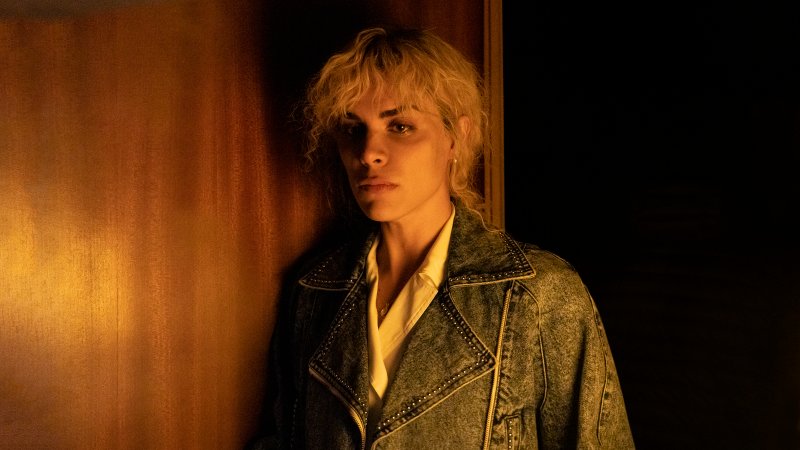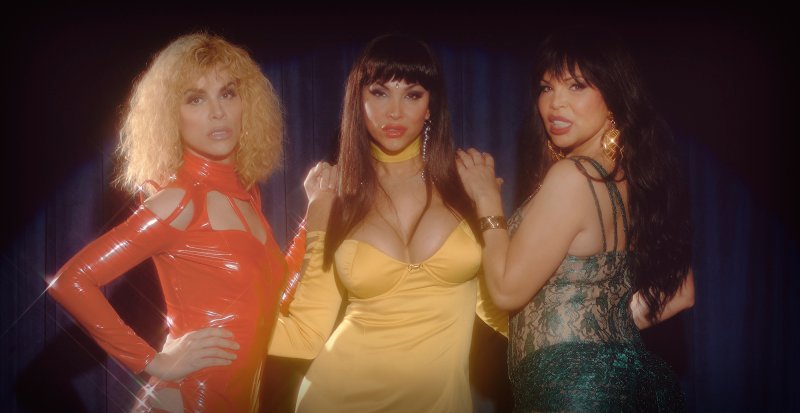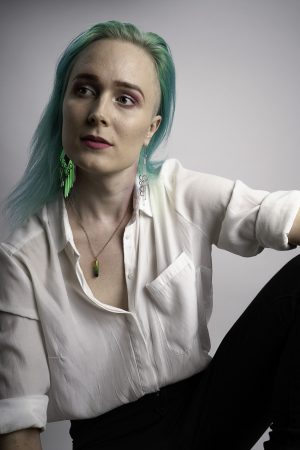Nothing about us without us

In our Diversity in the Film Industry series, Mira Eskelinen writes about trans representation on film and television. Harmful and cliched stories can be avoided by listening to and hiring trans filmmakers to tell their own stories. It can even create beautiful hit series.
Writer: Mira Aurelia Eskelinen
Translation: Marjo Pipinen
Image above: from the series Veneno / HBO Max
Before we start: I am not going to discuss here why a cis man playing a trans woman or a cis woman playing a trans man is problematic and harmful. This topic has been thoroughly dealt with for example in the Netflix documentary film Disclosure and in the panel discussion on theatre and trans representation (in Finnish) hosted by the Finnish National Theater and Trans ry, in which I participated together with artist Camille Auer and activist Pii Anttonen.
***
“If you want to create the stories about the LGBT community, you have to do it with LGBT people. That’s important because these are our stories and no one can tell them like we can.”
– Javier Ambrossi, director and screenwriter, Veneno (an interview with Ambrossi and Javier Calvo, Variety 11/2020)
Trans issues are a hot topic: trans visibility has been on the rise both in culture as well as politics, and there is more talk of gender diversity than ever. However, films and series are the only source of information for many: for example, in an American study by GLAAD from 2015, only 16% of the interviewees said that they personally knew a trans person (it is good to remember that often one cannot tell if a person is trans, so the number may be misleading). Films and series about gender diversity can thus have a big influence on how cisgender (meaning non-transgender) people understand the issues.
For a long time, series and films about trans issues have been made by cisgender people, often completely or almost completely without any trans presence. This is a problem for multiple reasons. First of all, trans issues are looked at solely with a cis gaze which is very narrow. It reduces, exoticizes, fetishizes and others. At best, it turns a trans character’s story into a chance for the cis lead or cis audience to learn about themselves and the world – too bad that most of the time this learning experience means suffering or death for the trans character. Being trans is often also seen as a challenge for the people close to the trans character – a partner, family, children or friends.
From a viewpoint of a trans woman and a professional in the cultural field, the works by cisgender filmmakers time and again revolve around often seen and cliched storylines, not to mention horrible transfobic caricatures (see the above-mentioned Disclosure for an extensive list). For example, trans women have been included mostly as tragic victims, disgusting jokes or serial killers threatening cis women. All these stereotypes and their repetition for decades has had an impact on how trans people are being treated and encountered in real life.
I don’t mean to say that all cisgender filmmakers mean to write awful trans characters or make bad descriptions of trans issues. For some, transness seems to look like a provocative curiosity that can create a sense of threat, but many for sure have a well-meaning aim to lift stories about minorities. But if you are not personally familiar with trans issues, it is easy to get caught in the drama of what may feel exciting and new (from a cis viewpoint): transition, surgery and coming out.
As activist, researcher and photographer Tinsku Wessman writes in the wonderful essay ”Väsyneet ja kyllästyneet – sukupuolivähemmistöt ja taide” (“Tired and bored – gender minorities and art”):
”When art deals with a minority, we get into a sensitive area, especially if the artist themself is not part of the minority they deal with in their art. This is when, in the eyes of the minority, many ‘well-meaning’ and ‘educational’ art projects end up being another exploitative and dismissive performance where cis people explore the ‘gender weird’.”
In reality, transness is so much more than that, and trans people are more than their transition or genitals. I often think about how narrow the female characters have been in stories written and directed by men, and how diverse and fresh the (cis) female characters and stories have become as (cis) women have gained more power in the film industry. Why wouldn’t the same happen with trans depictions if we were given the power to tell our stories?
***
One of the most impressive trans stories of recent times has absolutely been the Spanish miniseries Veneno. It tells the story of the most famous trans woman in Spain, Christina ”La Veneno” Rodríquez. It follows Christina’s life in different eras, and she is portrayed by three trans women of different ages: Jedet, Daniela Santiago sekä Isabel Torres. The series is full of other trans actors and crew members, and it is based on the book by Valeria Vegas, a journalist who is a friend of Christina and a trans woman herself. The creators of the series are Javier Ambrossi and Javier Calvo, a Spanish filmmaker couple.

Veneno / HBO Max
Cisgender filmmakers have used and abused trans people’s stories for decades without giving anything back to the trans community. Ideally, the story of La Veneno could be told by trans women themselves, but I feel that Ambrossi and Calvo’s method is a step in the right direction.
Los Javis, as they are called, have understood both that they lack personal understanding and that they have a responsibility as cisgender filmmakers. And they have used their position and power to give room to trans people – the stories are theirs after all. In interviews, Ambrossi and Calvo have repeatedly underlined how important it was for them to find trans actors and crew members – for example, the casting process took three months. This same process focusing on trans people can be seen in the series Pose whose creator Ryan Murphy gave a lot of space and say to trans people during the production, both on and off screen.
I don’t think it is a coincidence that Ambrossi, Calvo and Murphy are all cis gay men. It often feels that in terms of trans representation, human rights and visibility, we are at the same point as we were with gay rights at the turn of the millennium. Nowadays you can tell stories about (cis) gays and lesbians that are not just about their homosexuality, and the characters are not just bunch of age old cliches.
It probably has to do with the fact that cis gays, especially men, have managed to find higher positions in the film and TV industries and have been able to use their power (at their will) to enable projects where gay producers, actors, screenwriters, directors and other crew members have been able to tell their stories. More diverse depictions of gay characters have surely expanded the straight audiences’ views about gay people, and this has had a positive impact on advancing equality in legislation.
Ambrossi and Calvo have emphasized in interviews how Veneno was an LGBT role model and an idol for them. They wanted to treat Veneno with respect, which didn’t mean taking her edges off, on the contrary. In the series, Veneno is at times infuriating, irresistible, selfish, generous, loving, hating, broken, undefeated: a whole human being. The script based on the book by Valerie Vegas and the performances of Jedet, Daniela Santiago and Isabel Torres as Veneno at different ages let the audiences see her as a real, whole person.
The outcome of giving space to trans women’s voices can be seen in the reception of the series. When the first episode of Veneno was released in the Spanish streaming service Atresplayer Premium in March 2020, it became the most viewed pilot episode of the service in just a few hours. The number of users increased by 42% within the first month of its release, and at the moment Veneno is ten times more watched than the second most popular series on Atresplayer Premium, and no wonder.
Considering the diversity, depth and credibility of trans women characters and stories, Veneno and Pose are miles ahead of, for example, the awarded films The Danish Girl and Dallas Buyers Club. I have never seen old trans women depicted like they were in Veneno: as strong, beautiful and gorgeous. More correctly: I have never seen old trans women depicted at all anywhere outside of indie productions, and rarely even in those.
Trans depictions by cis people often show them alone and lonely, but in Veneno and Pose, the importance and beauty of community and chosen family is highlighted. In these series, the transness or other queer identity of these characters is not their only characteristic – and more notably – it is not the only source of their struggles.
I don’t think Veneno and Pose are great series just because they’ve been made by trans people but because they are gorgeous, nuanced and simply damn good and high-quality. For sure, as a trans woman I often feel close to the stories in a way I have never before felt with a series, but I believe other people can also identify with Veneno and Pose – even if they don’t center on the experiences of white, straight cis men.
My guideline for those cisgender filmmakers who want to tell trans stories is simple: don’t do anything without trans people. In other words, nothing about us without us. This may sound extreme but ask yourself: why am I attracted to this story? Why do you want to tell this exact story? Why would you be the right person to tell it?

Mira Eskelinen, photo: Jamie MacDonald
If you want to tell a story because you feel that it is important to tell stories about trans people, why would you only hire cisgender actors and crew members? If you want to tell a story that is as great and authentic as possible, why wouldn’t you hire trans people to tell their own stories? If you have the power to decide and make an impact, why not use that power to make space for trans storytellers? After all, the best way to have better trans stories in the world is to allow trans people to tell the stories themselves.
PS. Please enjoy this comic relief in the form of a comic strip.
Mira Eskelinen is a cultural producer, writer and performer from Helsinki who thinks She-Ra and the Princesses of Power is the best series in the world. She is a film producer by education. Mira hopes that every cisgender filmmaker would watch the documentary film Disclosure.
